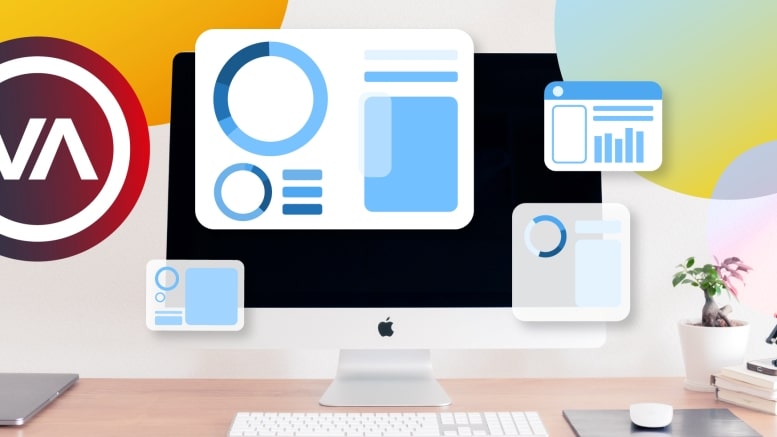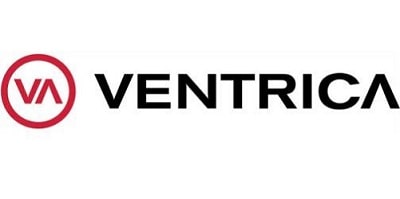Contact Centre Resource Planning – How To Do Resource Planning for Hybrid and WFH essential information from Ventrica
If you’re providing flexible working arrangements for your staff, getting the best out of your teams in a hybrid or remote working model has its challenges. It can be difficult for managers to ensure the employee experience is equal for a team split between working in the contact centre and working from home (WFH), not to mention ensuring your customer experience is also not impacted.

Many of the employee experience (EX) and customer experience (CX) issues organisations are experiencing with hybrid and WFH models stem back to resource planning. It’s crucial to ensure the tools, software and training are in place, the right forecasts are made, and everything is scheduled efficiently. If contact centre resource planning isn’t up to scratch before rolling out a hybrid or remote model, or improved quickly, the issues can quickly mount up.
Here’s what to consider, along with some resource planning tips, to help provide direction in a contact centre environment, especially one with a growing number of WFH employees. With enterprise resource planning (ERP) software adoption widespread, and the market size expected to reach $49.5 billion by 2027, successful companies know they require additional help to ensure long-term success.
 Forecasting & Scheduling with Accuracy
Forecasting & Scheduling with Accuracy
Being able to forecast workloads and what demand will be takes some prediction but should always be set in data. You will likely have historical data to lean on that will reveal various aspects about how days, weeks, months, and seasons are expected to look. Depending on the data you have and insights, you will be able to schedule more accurately and ensure you have the resources to cover peak demands, employee annual leave, and your service level targets to ensure customer satisfaction is met. If forecasting and scheduling are not carried out accurately, and certain scenarios and uncertainties are not planned for, issues can begin to arise.
One of the benefits a hybrid or remote model brings is the fact you have more flexibility and can cover more scenarios. Those working from home are unlikely to be affected by lateness or sickness as much as those having to travel to a workplace, for example, and may also be available at shorter notice to work overtime or additional shifts if required during peak periods.
As well as absenteeism issues that will affect forecasting and scheduling, historical data can better predict average handling times (AHT). The benefit of this is that you can accurately predict how long each advisor spends on calls and how this will impact service. You will also be able to see call volumes at certain times, days, and dates of the year. This is invaluable when scheduling and planning whether you need additional resources at certain points. Offering flexibility to staff in their shift patterns can help tackle absenteeism and cover your busiest periods much more efficiently. It will also boost EX and employee morale.
To ensure this is all even more effective overall, ongoing monitoring and reviewing of your productivity metrics and data, as well as your work processes, are essential. Forecasting and scheduling are one thing but understanding your data and getting feedback from employees can iron out the bumps in the road to success.
 Quality Assurance, Compliance and Security Concerns
Quality Assurance, Compliance and Security Concerns
Working from home brings with it various concerns, especially if this is a new way of working for your business. How do you ensure compliance regulations are met with a workforce outside business premises? With potentially large amounts of customer data being accessed from remote locations, it’s naturally one of the biggest security concerns a contact centre can have.
The best way to ensure compliance is by setting clear working rules for WFH employees that mirror the same standard as in-office advisors. Ensuring you know what your best practices are, and that they are understood by staff before they are allowed to work remotely is crucial. Compliance then needs to be monitored through quality assurance (QA).
Just as QA is vital to monitor performance, remain compliant, and develop training for your teams in-office, the same applies to remote working. As they will be using the same system setup, call monitoring has to continue to be used to spot any issues with compliance. It also needs to address omnichannel communication and ensure best practices are being followed.
Here are some of the risks to consider when thinking about security concerns with WFH:
– IT issues – if remote employees have software or computer issues and are not using company hardware, it may prove difficult to resolve as quickly as if they were in the office. Considering how you will address these types of problems is important.
– Cloud Software – you’ll more than likely be using cloud software for WFH advisors to be able to access data and also communicate. You will need to consider whether using a company VPN (Virtual Private Network) can ensure security issues such as data breaches do not impact them. If employees are using their own Wi-Fi network, how sure can you be that it is secure? How advisors access cloud software through password management and secure logins has to be addressed.
– WFH setup – before agreeing to work remotely, employees need to have the right setup at home to ensure efficient and secure work. Training on best practices ensures they can handle customer data and information securely and that only they have access to it, with no one else in their household able to view or access it easily. The same protocols employees follow in-office, such as locking their screen when away from their desk, not writing down passwords or customer information, need to apply at home.
 Technology – Is it Able to Help?
Technology – Is it Able to Help?
The important question is; are you providing your remote employees with the tools to work effectively in this environment? If not, productivity will slip, CX will be impacted, and your best forecasting and scheduling efforts will be for nothing. Having the right technology to rely on is crucial in a contact centre, especially when providing a digital solution for customers and a true omnichannel experience. If technology fails, your service will suffer, and your customers will look elsewhere for assistance.
ERP software enables everything to come together to work as productively as possible. When managing a contact centre with a hybrid team, you will also need software to be able to monitor everything and improve efficiency. This includes advanced call recording software, CRM systems that offer data protection and omnichannel collaboration, and intelligent agent assistance that utilises machine learning technology to help reduce interaction times. The purpose of all this is to help your remote workers be as efficient and productive as possible, minimising common issues, as well as delivering enhanced CX that your customers will advocate to others about.
Contact centre resource planning requires careful consideration of all outcomes and scenarios. When done effectively it can help ensure your WFH or hybrid model succeeds.

Ventrica is a leading European award-winning, outsourced customer management business that delivers omnichannel and multilingual customer service for blue-chip brands. Significant investment in people, automation and digital contact centre technologies allows Ventrica to enhance customer experiences designed to keep their clients ahead of the technology curve and their competition.
The company is headquartered in Southend, where it operates from spacious, hi-tech and modern offices, placing significant emphasis on its staff’s comfort and well-being. Ventrica shares the same passion for its customers’ business as it does for its own and continually strives for quality and service delivery consistency.
For additional information on Ventrica view their Company Profile
 Forecasting & Scheduling with Accuracy
Forecasting & Scheduling with Accuracy Quality Assurance, Compliance and Security Concerns
Quality Assurance, Compliance and Security Concerns Technology – Is it Able to Help?
Technology – Is it Able to Help?



